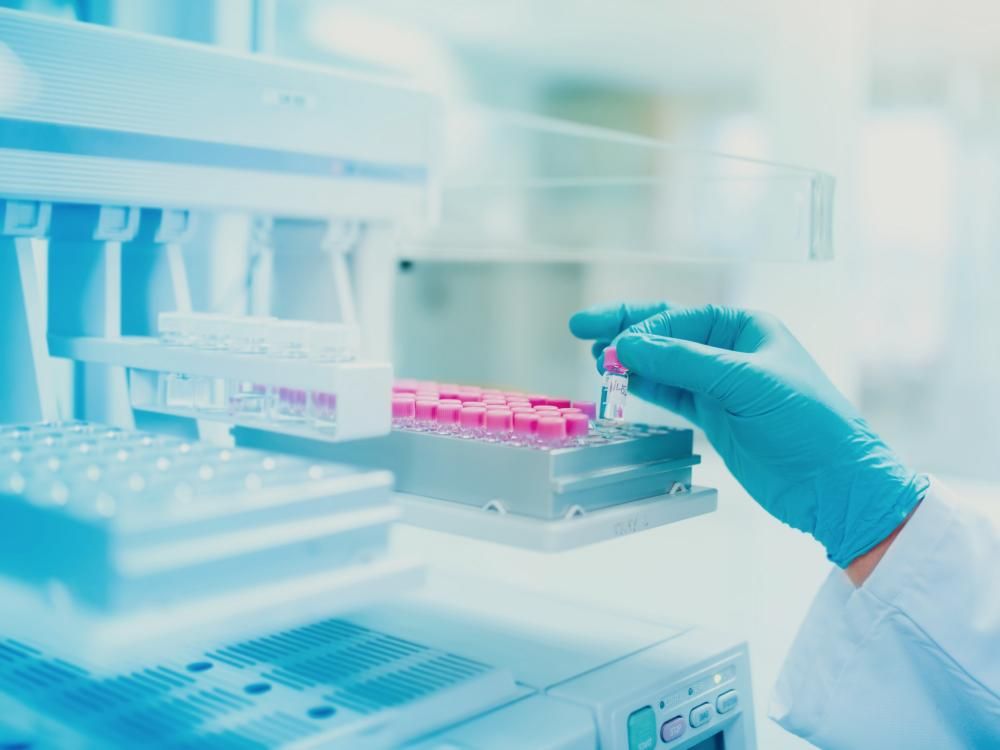
Pharmacy automation solutions: top five scenarios, benefits & adoption guidelines
November 12, 2025
- Home
- Healthcare software development solutions & services
- Pharmacy automation
Pharmacy automation involves using specialized software and equipment and re-engineering existing workflows to automate processes related to dispensing, storing, and delivering medications, as well as managing routine pharmacy operations such as prescription processing and record management.
Itransition provides comprehensive healthcare software development services to help pharmacies and hospitals implement and optimize pharmacy automation technologies, enhancing workforce efficiency, minimizing human error, and improving patient safety.
Pharmacy automation insights & trends
the projected pharmacy automation market size by 2030
Grand View Research, 2022
currently dominates the global pharmacy automation market
IMARC Group
prescription errors were avoided globally in 2024 through automated dispensing and verification
Market Growth Report
Types of pharmacy automation solutions
Pharmacy automation solutions enable pharmaceutical and healthcare organizations to partially or fully execute specific workflows. Here are the five processes most suitable for automation.

1 Storage & dispensing
Storing and dispensing medications are critical operations in any pharmacy. With each drug handled multiple times before reaching the patient, the risk of dispensing errors and mismanagement grows significantly. For instance, medications can be stored under improper conditions, retained past their expiration date, or dispensed in incorrect quantities.
Pharmacy automation solutions play a crucial role in mitigating these risks. For example, inventory management systems integrated with healthcare IoT solutions track each pharmaceutical asset in real time, ensuring their proper stock levels and accurate dispensing. When combined with automation hardware, such as pill counters, mixers, weights, and packaging machines, pharmacy software systems significantly reduce manual tasks, enabling pharmacy staff to focus on higher-value, patient-centered activities.
2 Compounding
3 Packaging & labeling
4 Data management
Patient data input, storage, updates, and transfer include repeated actions that can be automated with a dedicated software solution. Every time a doctor issues an electronic prescription, the data is transferred to the pharmacy and automatically checked against the inventory to verify availability. This enables patients to identify where a particular medication can be obtained.
The integration pharmacy management software with medical ecommerce apps allows the automatic input of sales and patient information into the system. This way, online order records are accurately maintained without requiring manual effort from pharmacy technicians. Additionally, inventory and supply management software continuously monitors stock levels for each drug, notifies personnel if supplies run low, and automatically places orders, eliminating medication shortages and stockouts.
5 Analytics & reporting
To continuously improve service quality and create a positive working environment, pharmacies need clear visibility into their operations. By integrating pharmacy automation software with healthcare BI tools, they can turn routine operational data into actionable insights. This integration enables real-time monitoring of prescription volumes, inventory turnover, staffing performance, and patient satisfaction. Such data-driven oversight helps pharmacies identify bottlenecks, ensure regulatory compliance, and continuously improve both operational efficiency and patient care as businesses grow.
Ready to automate your pharmacy workflows?
Pharmacy automation success stories

40x
faster dossier due diligence
Pharma due diligence automation
A global pharmaceutical company with nearly 100 years of market presence partnered with Itransition to streamline its medicine registration processes. To eliminate time-consuming, error-prone manual verification of medicine dossiers, Itransition implemented an automation solution that ensured compliance with healthcare regulations and automated stakeholder notifications for new registrations and renewals. As a result, the client saved over 1,200 work hours per month, reduced human effort on information updates by 80%, and streamlined business notification flow 30-fold.

2x
more submitted reports
Pharma adverse event reporting automation
A UK-based SaaS provider serving the world’s top 30 pharmaceutical companies partnered with Itransition to streamline drug safety reporting. To simplify real-time adverse event reporting for patients and clinicians, Itransition developed a cross-platform mobile application that automated and accelerated report submission. As a result, the client doubled the number of submitted reports, reduced the time and effort required for report creation, and improved patient outcomes.
Smart technologies in pharma automation
AI
An increasing number of companies apply artificial intelligence and machine learning in healthcare to power pharmacy automation devices and software. AI software performs vital quality control functions, such as image analysis in healthcare, ensuring accurate medication dispensing and packaging management: it verifies that the correct medication is being dispatched by triggering the machine to photograph and weigh the drug, then comparing the results with the corresponding data in the database.
Additionally, AI-powered chatbots, implemented in patient-facing solutions, help users choose a proper over-the-counter medicine based on their symptoms or order a prescription online or via the phone. The technology can also help companies foster pharmacy business development by gathering, processing, and analyzing vital consumer data.
Blockchain
The adoption rate of blockchain in healthcare and pharma is at an all-time high, driven by its ability to enhance security and traceability. Blockchain technology enforces the Drug Quality Security Act by ensuring drug traceability. Each drug is marked with a unique code when produced, and this code can be input into the blockchain. Afterward, each operation with this medication is added to the blockchain: when it is transferred from the wholesaler to the retail pharmacy, when it is sold to a patient or sent to a hospital, returned by the doctor or patient, or discarded due to expiration.
Many companies have already successfully integrated blockchain solutions into their processes. Devices used in such retail and hospital pharmacies read the code and automatically store the information in the blockchain or check it. This way, a counterfeit medication cannot circulate in the system, as there won’t be a proper code for it, and the software will notify the pharmacist about a mismatch. Fake medicines pose a significant threat to the health and lives of patients and also cause 37,700 pharmacy professionals to lose their jobs annually in the EU.
RPA
Robotic process automation interconnects closely with AI in pharmacy and healthcare operations. RPA applied in healthcare and the pharmaceutical sector ensures the accuracy of processes like automatic medication dispensing and proper storage based on their unique barcodes, placing orders, and tracking returns. It also enables pharmacies to collect, store, update, and efficiently retrieve patient data, as well as generate reports for caregivers, doctors, and regulatory authorities.
Best integrations for pharmacy automation
Pharmacies are often a part of a larger healthcare organization, such as hospitals, long-term care facilities, or central fill stations. To operate efficiently, these organizations require health system pharmacy software that is fully integrated with their IT ecosystems.
EHR/EMR
Enabling timely prescription fulfillment and refills based on the information in patients’ medical history to avoid delivering the wrong medications, keep track of substance usage, and reduce the time and effort needed for order processing.
Coordinating equipment and substance ordering, their timely maintenance and proper storage, and optimizing medication distribution across hospital facilities according to real-time needs.
Healthcare ecommerce
Boosting profits by selling pharmaceutical products and services online 24/7 with the help of ecommerce tools.
Connecting with customers, understanding their needs, and improving their experience, fostering trust and loyalty with various patient engagement software.
How to choose a pharmacy automation solution
Selecting the most suitable pharmacy automation solution can be complex, therefore, it is recommended to break the process into four key steps.
1
2
3
4
Pharmacy automation benefits
Increased precision & safety
Improved efficiency & resource allocation
Reduced waste
Pharmacy management software helps minimize medication management waste by tracking expiration dates, monitoring stock levels, and alerting staff about potential issues, such as the damage of fragile medicine packaging, thereby contributing to more cost-effective pharmaceutical operations.
Improved data protection & confidentiality
Automation adoption challenges
Interoperability & standardization issues
Interoperability & standardization issues
Significant initial investment
Significant initial investment
Set-up & maintenance
Set-up & maintenance
Our pharmacy automation services
Automating pharmacy operations is a complex undertaking that requires careful planning and guided implementation in compliance with stringent regulatory requirements. With 25+ years in healthcare IT, our team can help pharmaceutical companies navigate this process as smoothly and quickly as possible.
Consulting
Our experts help you elicit and analyze your business objectives to define and prioritize workflows for automation and determine the appropriate technology for that. We can also plan your implementation initiative and oversee its execution to ensure maximum ROI.
Development
We develop tailored software to support your pharmacy automation strategy, integrating it with third-party services and solutions while ensuring full alignment with your established business processes and operational workflows.
Implementation
Our team performs pharmacy automation software implementation end-to-end, from initial analysis and conceptualization to solutions deployment and post-launch support, helping you achieve operational excellence and maximize the ROI of your automation initiative.
Support
We help you onboard and train software users to maximize the solution’s adoption, while also monitoring and maintaining the new system to resolve operational issues, eliminate performance bottlenecks, and implement upgrades when needed.

Entrust pharmacy automation to experts
Automating pharmacy operations has become necessary for growing your business while maintaining high-quality services and safe working conditions. However, such a complex process has many challenges for pharma organizations new to automation. Engaging an experienced automation consultant and implementation partner like Itransition can help healthcare organizations streamline deployment, minimize integration risks, and achieve faster return on investment.

Need a reliable pharmacy automation provider?
FAQs
What is the cost of pharmacy automation?
How long does it take to automate pharmacy services?
The timeline depends on the complexity of the project. The average process takes from 9 to 18 months. If you need a preliminary estimate for your pharmacy automation initiative, contact our specialists.
What does a pharmacy automation specialist do?
Will pharmacy staff lose jobs because of AI & automation?

Service
Pharmacy management software: key features and implementation best practices
Optimize your pharmaceutical inventory and documentation flow to enhance patient care with custom pharmacy management software development services.

Case study
Pharmaceutical data analytics suite for a US multinational
Read about Itransition’s 10+ years long cooperation with a US-based multinational to create their flagship pharmaceutical data analytics products.

Insights
Business process management in healthcare: features, examples & platforms
Discover how BPM solutions can help your healthcare organization optimize workflows to improve productivity, enhance care quality, and increase profits.

Insights
Hospital management software: a complete overview & real-world examples
Explore hospital management software solutions, benefits, and platforms to enhance your institution’s process efficiency, patient care, and communication.

Insights
Healthcare data governance: components, benefits & strategy building
Discover the benefits of a data governance strategy for healthcare providers, tips on its successful implementation, and solutions to possible challenges.

Case study
Atlassian suite optimization for a pharma solutions provider
Learn how Itransition helped a pharma provider fine-tune their Atlassian setup and migrate to Atlassian Cloud Enterprise, ensuring license costs optimization.

Case study
AI answer engine for doctors and patients
Learn how we delivered a PoC of an OpenAI-based web application that answers medical questions interacting with the Davinci AI model.
More about healthcare software services
Services
EHR
Telehealth